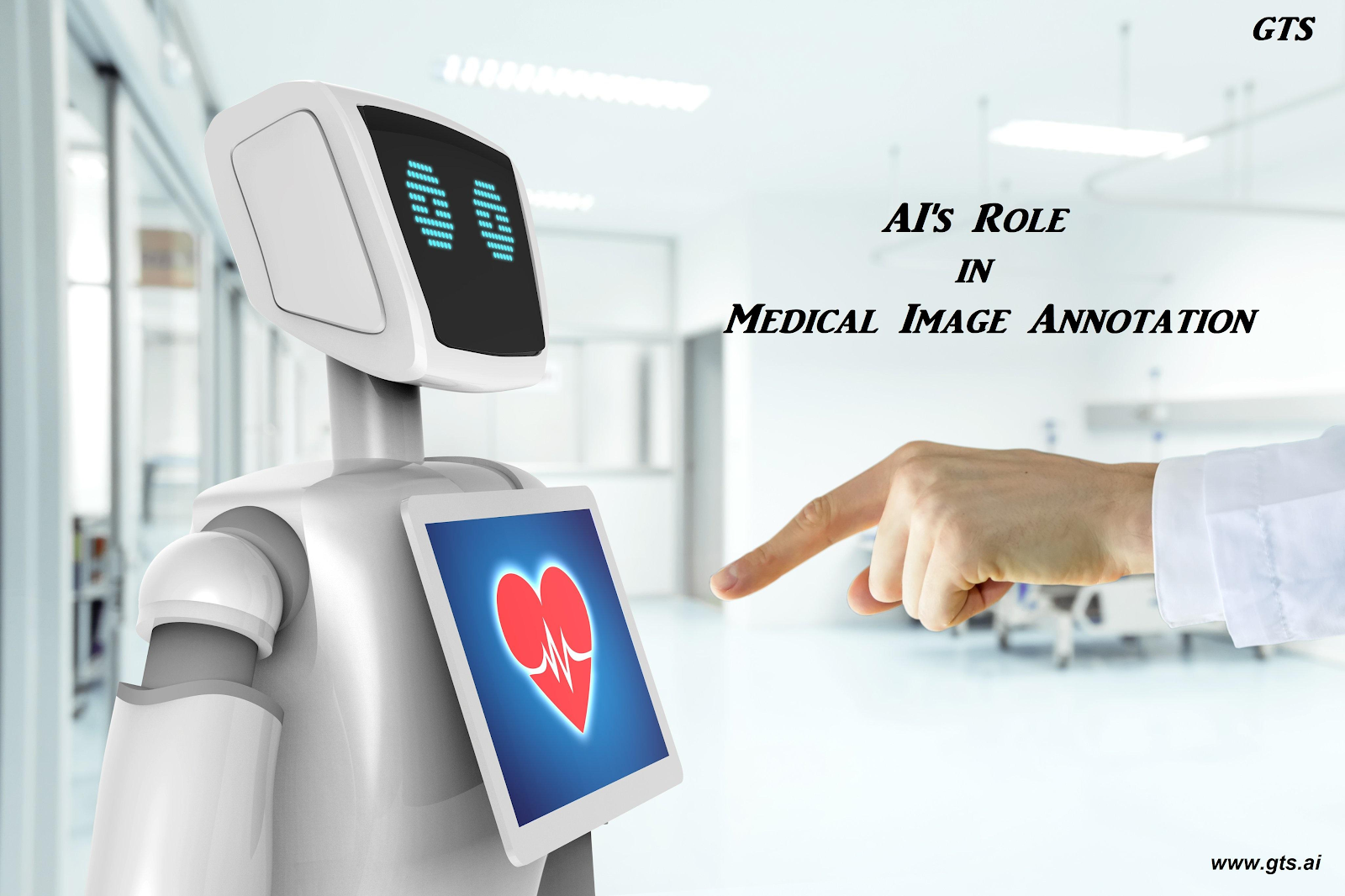AI's Role in Medical Image Annotation
Machine learning and artificial intelligence breakthroughs have completely transformed the healthcare business. The global market for AI in healthcare sector was worth around $1 billion in 2016, and it is expected to grow to more than $28 billion by 2025. In 2022, the global AI in the Medical Imaging market is expected to be worth over $980 million. Furthermore, this value is expected to expand at a 26.77 per cent CAGR to $3215 million by 2027.
What is Medical Image Annotation?
The healthcare business is utilising ML's promise to improve patient care, improve diagnostics, provide more accurate treatment predictions, and discover new drugs. There are, however, a few areas of medical sciences where AI can assist medical professionals in medical imaging. To construct effective AI-based medical imaging models, however, huge volumes of medical imaging must be reliably classified and annotated. Medical image annotation is the process of precisely identifying medical imaging such as MRIs, CT scans, ultrasounds, mammograms, X-rays, and other images in order to train a machine learning model. Aside from imaging, medical image data such as records and reports are annotated to aid in the training of clinical NER and Deep Learning models.
This medical picture annotation aids in the training of deep learning algorithms and machine learning models to evaluate medical images and enhance diagnosis accuracy.
The Function of Medical Image Annotation in Medical Diagnosis
The potential of AI in medical image diagnosis is enormous, and the healthcare industry is utilising AI and ML to give patients faster and more trustworthy diagnoses. Some examples of healthcare picture annotation applications in AI medical diagnosis include:
Cancer Screening
Cancer cell detection is likely AI's most important role in medical image analysis. When models are trained on large amounts of medical imaging data, the model is better able to identify, detect, and predict the growth of cancer cells in organs. As a result, the possibility of human errors and false positives is greatly reduced.
Dental X-rays
AI-enabled models can accurately diagnose dental and gum-related medical issues such as cavities, abnormalities in tooth structure, decay, and diseases.
Complications of the Liver
By analysing medical images to discover and identify irregularities, liver complications can be successfully diagnosed, defined, and monitored.
Disorders of the Brain
Annotating medical images aids in the detection of brain diseases, clots, tumours, and other neurological difficulties.
Dermatology
Computer vision and medical imaging are also widely utilised to quickly and accurately detect dermatological problems.
Heart problems
In cardiology, AI is increasingly being used to detect heart anomalies, heart conditions, the need for intervention, and to interpret echocardiograms.
Documents Annotated Using Medical Image Annotation
Annotating medical data is a critical step in the creation of machine learning models. It is difficult to create a valuable ML model without thorough and medically correct annotation of records with text, metadata, and other remarks.
It would be advantageous if you have highly skilled and experienced annotators for medical picture data. Some of the documents that have been annotated include
CT Scan
Mammogram
X-Ray
Echocardiogram
Ultrasound
MRI
EEG
DICOM
NIfTI
Audio – Physician Dictation Audio
Videos
Photos
Text – EHR Dataset
Images
Annotation of medical images vs. Ongoing data annotation
When developing an ML model for medical imaging, keep in mind that it differs from conventional image data annotation in numerous aspects. Let's start with a radiology imaging example.
But first, we'll set out the premise: all images and movies you've ever taken come from a narrow portion of the spectrum known as visible light. Radiology imaging, on the other hand, is done with X-Rays, which fall inside the invisible light section of the electromagnetic spectrum.
A full comparison between medical imaging annotation and regular data annotation is provided below.
HIPAA Compliance
To produce an accurate prediction, AI-based healthcare models must be trained and tested utilising massive amounts of high-quality medical dataaets that have been appropriately annotated. When selecting a platform for your medical picture annotation and data processing needs, search for offerings that meet these technical compliance standards.
HIPAA is federal legislation that oversees the security of electronically transmitted health information and requires providers to take sufficient precautions to prevent patient information from being revealed without the patient's consent.
Is there a system for storing and managing healthcare information?
Are system backups produced, maintained, and updated on a regular basis?
Is there a system in place to keep unauthorised users from gaining access to sensitive medical data?
Is the data encrypted at rest and during transfer?
Are there any safeguards in place to prevent users from exporting and keeping medical photos on their devices, resulting in a security breach?
How Can GTS Help?
Global Technology Solutions has consistently been an industry leader in the provision of high-quality training medical pictures for the development of advanced healthcare AI-based medical solutions. We have a staff of highly competent radiologists, pathologists, and general physicians that support and train the annotators, as well as a large network of highly qualified radiologists, pathologists, and general physicians. Furthermore, our best-in-class annotation accuracy and data labelling services aid in the development of tools to improve patient diagnosis. When you collaborate with GTS, you may enjoy the convenience of dealing with professionals who assure regulatory compliance, data formats, and quick throughput time. When you have a medical data annotation project in mind that requires world-class expert annotation services, GTS is the perfect partner to work with.



Comments
Post a Comment